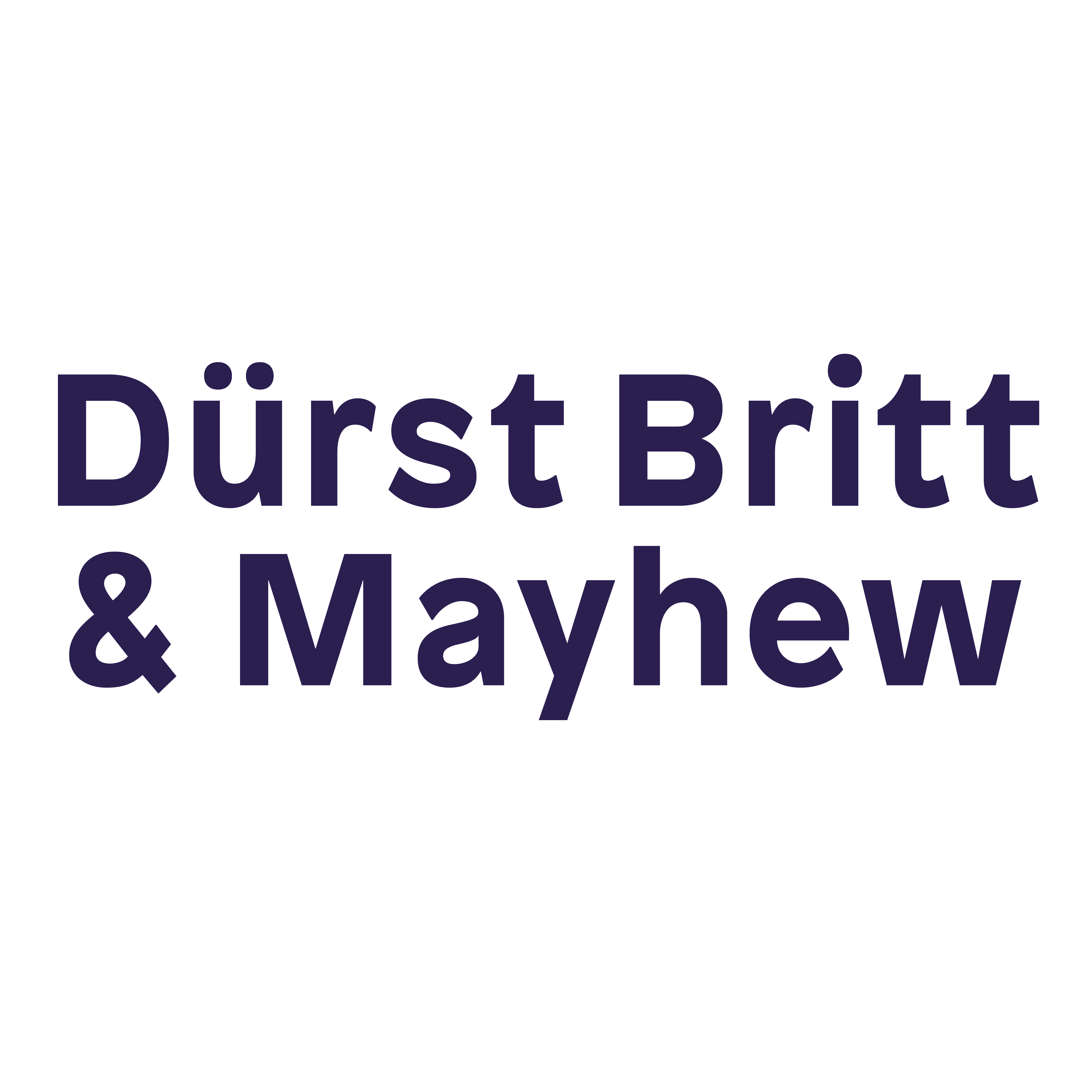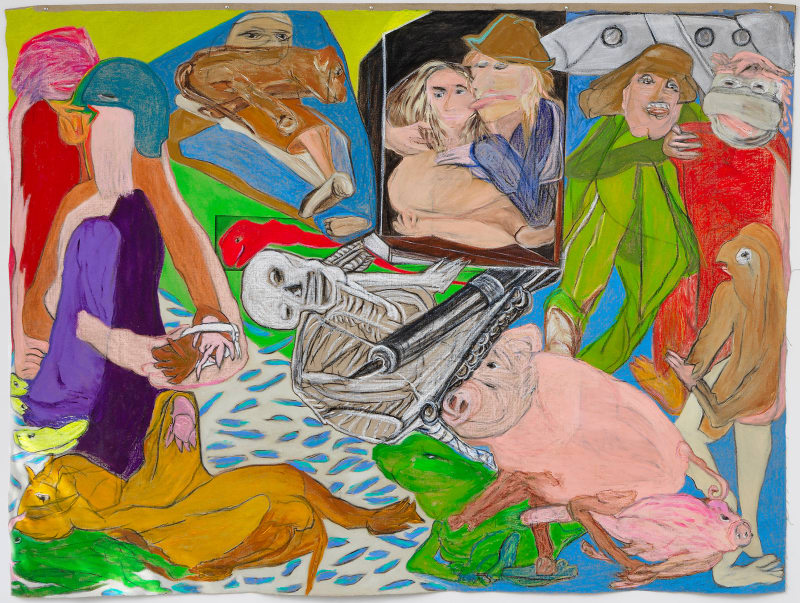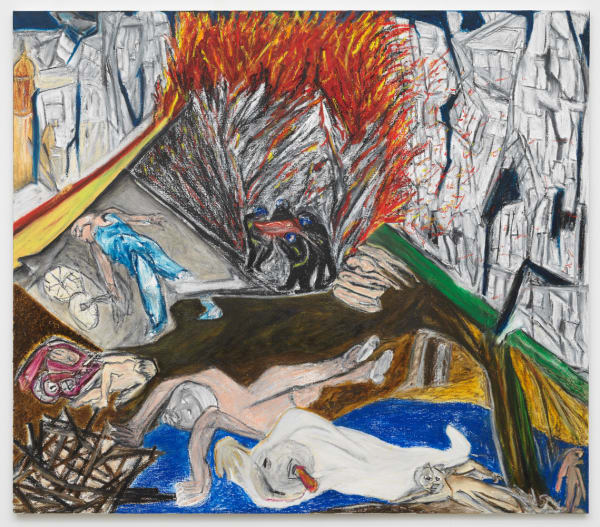Jacqueline de Jong: Frontspace: Border…and other Lines
Jacqueline de Jong’s third solo exhibition at Dürst Britt & Mayhew brings together a series of large-scale paintings made between February 2022 and May 2023. ‘Idlib in Snow’, a painting completed at the beginning of 2022, marks the transition from a series of works about one catastrophic event, the refugee crisis in Syria, to another: the war in Ukraine. The refugee tents in Idlib at Syria’s border are covered with snow, which, in hindsight, can be seen as a dark omen of the crises that would unfold further north, in Ukraine. The canvasses that follow carry the names of Ukrainian cities that, over the course of the last year, have become battlegrounds. Alongside the works dedicated to the war in Ukraine, two paintings with refugees return, as this catastrophe continues to unfold as well. Her most recent painting, ‘Disasters’, brings the two subject matters together.
Reflecting De Jong’s working process, the exhibition also includes two works less directly related to political events. De Jong refers to them as “loose works.” They function as playgrounds or sketchbooks developed alongside the more reality-bound paintings. These imaginative works make no direct references to contemporary political realities and are instead populated by De Jong’s signature humanoid creatures – skeletons, monsters, animal- human hybrids – in chaotic distribution, equal parts dangerous, dark, deadly and erotic.
Throughout her oeuvre, many of De Jong’s works have absorbed moments of crisis and terror, moments in which order has dissolved and something bigger, more terrifying has taken over. Wars have been frequent subjects and continue to haunt De Jong’s imagination as terrifying, all-consuming machines that leave the humans forced to go through them in chaos and disarray. Figure and ground tumble, perspectives collapse and flames flare up between rubble and ruins; buildings fall, and figures are squeezed into the diminishing spaces between them. The human bodies depicted have become pliable, they are thrown around, and when they appear as a mass or in groups – as they often do in the works that refer to the refugee crisis – their bodies are stacked and packed tightly, piled on top of each other. They are pushed and pulled, mangled and thrown away, degraded to material. Lines are crossed here, in the most dehumanizing ways.
Text by Melanie Bühler, Senior Curator at Kunstmuseum St. Gallen in Switzerland
-
 Jacqueline de Jong, Inclusion, 2022
Jacqueline de Jong, Inclusion, 2022 -
 Jacqueline de Jong, Sleep in Oblivia, 2023
Jacqueline de Jong, Sleep in Oblivia, 2023 -
 Jacqueline de Jong, Boutcha II, 2022
Jacqueline de Jong, Boutcha II, 2022 -
 Jacqueline de Jong, Disasters, 2023
Jacqueline de Jong, Disasters, 2023













